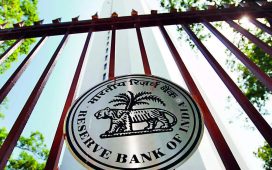
“I know that the most important part of our strategy is deposits, and are we happy with the kind of numbers that have come about? Not really. It has fallen short of our expectations, but frankly if you see this, this is not something new,” Jagdishan said during an analyst call after HDFC Bank released its first quarter results on Saturday. “But this time around, obviously we were a little bit surprised on the period-end numbers because of some unexpected flows in the current account which was more than what we had anticipated.”
The bank reported total deposits of Rs 23.79 lakh crore as on June 30, up 24.4% year-on-year. Gross advances grew much faster, accelerating 52.6% to Rs 24.87 lakh crore during this period. The wide gap between credit and deposit growth, which exerts pressure to mobilise funds, has been flagged as a regulatory concern by the Reserve Bank of India (RBI) for the banking sector as a whole.
Within deposits, HDFC Bank’s current account savings account (CASA) deposits grew 6.2% year-on-year in April-June, with savings account deposits at Rs 5.96 lakh crore and current account deposits at Rs 2.67 lakh crore. CASA deposits are a low-cost source of funds for banks.
“Sashi did allude to the current account, how we got Rs 540 billion (Rs 54,000 crore) in March quarter and we did have a rundown of utilisation of the customers of Rs 430 billion (Rs 43,000 crore) in the June quarter,” said Srinivasan Vaidyanathan, chief financial officer, HDFC Bank. “Despite all of that we are the largest current account bank. Current account constitutes 11% of our total deposit stack. In March it was about 14%.”
The bank, which merged with HDFC Limited in July 2023, reported a net profit of Rs 16,170 crore for April-June, up 35.3% year-on-year.Jagdishan said HDFC Bank’s ground-level teams would focus on the basics on a day-to-day basis, adding that emphasis on certain period-end numbers was leading to unintended performance-related pressures, which the lender wished to avoid.“In reality, the deposit momentum, when you look at it – the gross inflows across the multiple products in deposits – have actually been increasing. It’s a very healthy trend,” he said.
In HDFC Bank’s annual report, released last week, Jagdishan had said that the country’s largest bank by market capitalisation would look to increase advances at a slower pace than deposits, bringing down its credit-deposit (CD) ratio. The CD ratio, or loan-deposit ratio, represents the portion of fresh deposits being given out as loans.
While HDFC Bank has not been given a prescription from the RBI to bring down its CD ratio, Jagdishan said that it was in the bank’s best interest to do so.
“As I mentioned, it is in our interest to have a glide path (to bring down the CD ratio),” he said, adding that while he would “love” to do this in one year, such an aim might not be practical.
HDFC Bank’s CD ratio shot up to 105% as on March 31, 2024, from around 85% prior to the merger, as the lender inherited a large quantum of mortgage loans but a smaller pool of deposits from the erstwhile non-banking finance company.
“So, a combination of outflows in current account and a combination of at least a Rs 160 billion rupee (Rs 16,000 crore) of erstwhile HDFC non-retail deposits which ran down has given us a very tepid kind of a net accretion on a period-end basis,” he said.









